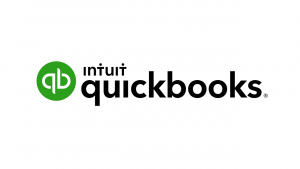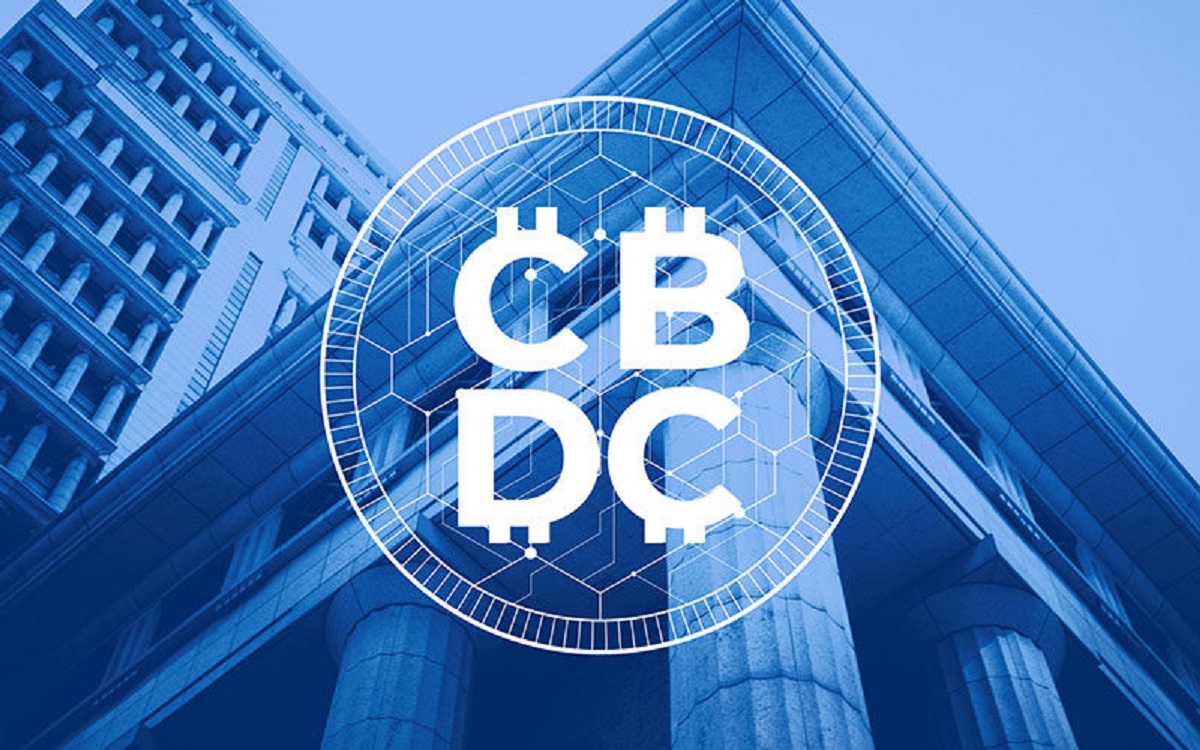Introduction
When it comes to the world of lending, there are various terms that may seem similar but actually represent different aspects of the lending process. Two such terms are correspondent lending and wholesale lending. These terms often crop up in discussions within the lending industry, but many people are unsure about the precise differences between them.
Correspondent lending and wholesale lending both play vital roles within the mortgage industry. While they may share certain similarities, such as facilitating loans between borrowers and lenders, there are distinct differences that set them apart. Understanding these differences is crucial for borrowers, lenders, and other stakeholders in the lending process.
In this article, we will delve into the details of correspondent lending and wholesale lending and explore the key differences between them. We will discuss the product offerings, approval processes, and borrower relationships associated with each type of lending. Additionally, we will examine the unique responsibilities, advantages, and disadvantages that correspondent lenders and wholesale lenders face in their respective roles.
By the end of this article, you will have a comprehensive understanding of correspondent lending and wholesale lending, allowing you to make more informed decisions regarding your lending needs.
Definition of Correspondent Lending
Correspondent lending is a type of mortgage lending where a lender originates and funds loans using its own capital. In this arrangement, the lender acts as a liaison, or “correspondent,” between the borrower and the ultimate investor who will hold and service the loan. The lender remains responsible for underwriting the loan according to the investor’s guidelines and ensuring compliance with relevant regulations.
Correspondent lenders typically have a direct relationship with the borrower and are involved in every step of the loan process, from origination to closing. They handle tasks such as evaluating the borrower’s creditworthiness, verifying income and assets, and conducting property appraisals. Once the loan is funded, the correspondent lender may choose to retain the loan in its portfolio or sell it on the secondary market to investors.
One of the defining characteristics of correspondent lending is the ability for lenders to establish their own underwriting standards within the parameters set by the investor. This allows for greater flexibility in approving and customizing loan products to suit the unique needs of borrowers. Correspondent lenders may also have more control over the loan terms and interest rates offered to borrowers.
The relationship between a correspondent lender and its investors is crucial in this type of lending. The lender must maintain a strong working relationship with investors to ensure ongoing funding for its loans. Regular communication and adherence to investor requirements are essential to maintain a successful correspondent lending operation.
Overall, correspondent lending provides an opportunity for lenders to have direct involvement in the loan origination and underwriting process, while also offering greater control over loan products and a more personalized experience for borrowers.
Definition of Wholesale Lending
Wholesale lending, also known as wholesale mortgage lending, is a form of lending where loans are originated by independent mortgage brokers or loan officers on behalf of wholesale lenders. In this arrangement, the wholesale lender provides the loan funds, while the broker or loan officer serves as an intermediary between the borrower and the lender.
Wholesale lenders create partnerships with mortgage brokers and loan officers across the country. These brokers and loan officers have access to a wide range of loan products offered by the wholesale lender. They work directly with borrowers to evaluate their financial situation, assist with loan applications, and help them navigate the loan process.
Unlike correspondent lending, where the lender funds the loan with its own capital, wholesale lenders do not directly interact with the borrower. They rely on the brokers or loan officers to gather the necessary documentation, such as income verification and credit reports, and submit the loan application to the wholesale lender. The wholesale lender then reviews the application, underwrites the loan, and provides the funds to the borrower.
Wholesale lending offers certain advantages to both the wholesale lender and the mortgage broker. For the lender, it allows them to reach a larger pool of borrowers without having to devote resources to marketing and loan origination. On the other hand, mortgage brokers benefit from the access to a variety of loan products from different lenders, enabling them to offer borrowers a wider range of options.
Due to the intermediary role of the mortgage broker or loan officer, wholesale lending often involves a commission-based compensation structure. The broker or loan officer earns a commission based on the loan volume or the interest rate spread, incentivizing them to find suitable loan options for borrowers.
Overall, wholesale lending serves as an important channel for lenders to expand their reach and for mortgage brokers and loan officers to connect borrowers with suitable loan products.
Key Differences Between Correspondent Lending and Wholesale Lending
While both correspondent lending and wholesale lending involve facilitating mortgage loans, there are several key differences that set them apart:
- Loan Origination: In correspondent lending, the lender originates and funds the loan using its own capital, while in wholesale lending, independent mortgage brokers or loan officers originate the loans on behalf of wholesale lenders.
- Borrower Relationship: Correspondent lenders have a direct relationship with the borrower and are involved in every step of the loan process, from origination to closing. Wholesale lenders, on the other hand, rely on mortgage brokers or loan officers to interact with borrowers.
- Underwriting and Loan Approval: Correspondent lenders underwrite loans according to investor guidelines while maintaining some flexibility to set their own standards within those guidelines. Wholesale lenders typically follow strict underwriting guidelines set by the lender and have less control over customizing loan products.
- Product Offerings: Correspondent lenders often have the ability to offer a wider range of loan products and have more control over loan terms and interest rates. Wholesale lenders rely on the offerings of the wholesale lender and may have less flexibility in customizing loan terms.
- Responsibilities: Correspondent lenders are responsible for the entire loan process, including evaluating borrower creditworthiness, collecting documentation, and conducting property appraisals. Wholesale lenders primarily focus on underwriting and providing loan funds, leaving the responsibility of borrower interaction to mortgage brokers or loan officers.
- Funding: In correspondent lending, the lender may choose to retain the loan in its portfolio or sell it on the secondary market to investors. Wholesale lenders provide the loan funds directly to borrowers.
- Compensation: Correspondent lenders earn income from the interest payments and fees associated with the loans they originate. Wholesale lenders earn income by providing loan funds to borrowers at a wholesale rate and collecting interest payments from the borrowers.
By understanding these key differences, borrowers, lenders, and industry professionals can make informed decisions about the best lending option for their unique needs and circumstances.
Product Offerings in Correspondent Lending
Correspondent lending provides lenders with a wide range of loan product offerings to meet the diverse needs of borrowers. One of the key advantages of correspondent lending is the flexibility to tailor loan products according to the specific requirements of borrowers. Here are some of the common product offerings in correspondent lending:
- Conventional Loans: Correspondent lenders often offer conventional mortgage loans, which are not insured or guaranteed by a government entity. These loans typically require a higher credit score and a larger down payment compared to government-backed loans.
- FHA Loans: Correspondent lenders may also provide loans insured by the Federal Housing Administration (FHA). FHA loans are popular among borrowers with lower credit scores or limited down payment funds, as they offer more lenient qualification requirements.
- VA Loans: Correspondent lenders may specialize in offering loans backed by the U.S. Department of Veterans Affairs (VA). VA loans are available to eligible veterans, active-duty military personnel, and surviving spouses, providing favorable terms such as low or no down payment requirements.
- Jumbo Loans: Correspondent lenders may have the capacity to offer jumbo loans, which exceed the loan limits set by government-sponsored enterprises like Fannie Mae and Freddie Mac. Jumbo loans are typically used for high-value properties and require larger down payments and stricter underwriting standards.
- Portfolio Loans: Correspondent lenders who retain loans in their portfolio may offer portfolio loans that do not conform to traditional guidelines. These loans provide more flexibility in terms of credit scores, income documentation, and property types.
- Adjustable-Rate Mortgages (ARMs): Correspondent lenders may provide borrowers with the option of adjustable-rate mortgages. ARMs typically offer a fixed interest rate for an initial period and then adjust periodically based on market conditions.
- Specialized Loan Programs: Correspondent lenders may partner with specialized programs or agencies to offer loans tailored to specific borrower needs. These may include programs for first-time homebuyers, low-income borrowers, or individuals with unique financial circumstances.
It’s important to note that the availability of specific loan products may vary among correspondent lenders. Borrowers should work closely with lenders to explore the various options and find the loan product that best suits their needs and financial goals.
Product Offerings in Wholesale Lending
Wholesale lending offers a range of loan products through the partnership between wholesale lenders and independent mortgage brokers or loan officers. These lenders provide diverse product offerings to cater to the needs of borrowers. Here are some common product offerings in wholesale lending:
- Conventional Loans: Wholesale lenders often offer conventional mortgage loans, which are not insured or guaranteed by government entities. These loans have varying terms and options to accommodate different borrower profiles.
- FHA Loans: Wholesale lenders may provide loans insured by the Federal Housing Administration (FHA). FHA loans are suitable for borrowers who may have lower credit scores or limited down payment funds, as FHA offers more lenient qualification requirements.
- VA Loans: Wholesale lenders may specialize in offering loans backed by the U.S. Department of Veterans Affairs (VA). VA loans are designed for eligible veterans, active-duty military personnel, and surviving spouses and come with favorable terms such as low or no down payment requirements.
- Jumbo Loans: Wholesale lenders may offer jumbo loans, which exceed the loan limits set by government-sponsored enterprises like Fannie Mae and Freddie Mac. Jumbo loans are typically used for high-value properties and may require larger down payments and stricter underwriting standards.
- Fixed-Rate Mortgages: Wholesale lenders provide borrowers with the option of fixed-rate mortgages, where the interest rate remains stable throughout the loan term. This provides predictable monthly payments and can be appealing to borrowers seeking long-term stability.
- Adjustable-Rate Mortgages (ARMs): Wholesale lenders offer adjustable-rate mortgages, commonly known as ARMs. These mortgages typically start with a fixed interest rate for a specific period and then adjust periodically based on market conditions.
- Government-Backed Loans: Wholesale lenders may offer government-backed loans, such as USDA rural development loans or HUD Section 184 loans, which cater to specific borrower demographics or property types.
- Specialized Loan Programs: Wholesale lenders may have access to specialized loan programs tailored to specific borrower needs, such as first-time homebuyer programs, low-income assistance programs, or renovation and rehabilitation loans.
It’s important to note that the availability of specific loan products may vary among wholesale lenders. Mortgage brokers and loan officers work closely with borrowers to identify the most suitable loan product based on their unique circumstances and goals.
Approval Process in Correspondent Lending
The approval process in correspondent lending involves multiple steps to ensure that borrowers meet the necessary criteria and lenders adhere to investor guidelines. Here is an overview of the typical approval process in correspondent lending:
- Loan Application: Borrowers begin the approval process by submitting a loan application to the correspondent lender. The application includes information about the borrower’s financial situation, employment history, credit history, and the desired loan amount.
- Documentation Collection: Correspondent lenders request documentation from borrowers to verify their income, assets, and other relevant information. This may include pay stubs, bank statements, tax returns, and employment verification documents.
- Underwriting: The correspondent lender’s underwriting team evaluates the borrower’s application and accompanying documentation. They assess the borrower’s creditworthiness, income stability, and debt-to-income ratio to ensure that the loan meets investor guidelines.
- Appraisal: The correspondent lender arranges for a professional appraiser to assess the value of the property being financed. The appraiser provides an unbiased opinion of the property’s worth, helping to determine the loan-to-value ratio and assess the risk associated with the loan.
- Loan Approval: Once the underwriting process is complete and all necessary documentation has been reviewed, the correspondent lender makes a decision on the loan application. If approved, the lender issues a loan approval letter, specifying the terms and conditions of the loan.
- Closing Preparation: If the loan is approved, the correspondent lender prepares for the loan closing. This involves coordinating with various parties, such as title companies, insurance providers, and attorneys, to finalize the necessary paperwork and ensure a smooth closing process.
- Funding: After the closing documents are signed, the correspondent lender funds the loan. They either use their own capital to fund the loan or sell it on the secondary market to investors, receiving the necessary funds to disburse to the borrower.
- Servicing: In some cases, the correspondent lender may choose to service the loan themselves, handling tasks such as collecting monthly payments, managing escrow accounts, and addressing borrower inquiries. Alternatively, they may transfer the servicing rights to another entity.
Throughout the approval process, correspondent lenders must ensure compliance with investor guidelines, regulatory requirements, and industry best practices. Open communication with borrowers and efficient coordination of the various steps involved are essential in successfully navigating the approval process in correspondent lending.
Approval Process in Wholesale Lending
The approval process in wholesale lending involves a collaborative effort between mortgage brokers or loan officers and wholesale lenders to evaluate the borrower’s eligibility and secure loan approval. Here is an overview of the typical approval process in wholesale lending:
- Loan Application: Borrowers work with their chosen mortgage broker or loan officer to complete a loan application. The application captures relevant borrower information such as personal details, income, employment history, credit history, and desired loan terms.
- Pre-Qualification: The mortgage broker or loan officer reviews the borrower’s application and supporting documentation to assess their financial eligibility. They evaluate creditworthiness, debt-to-income ratio, and other factors to determine the appropriate loan products to pursue.
- Loan Submission: Once the borrower is pre-qualified, the mortgage broker or loan officer submits the loan application, along with all necessary documentation, to the wholesale lender for underwriting and loan approval.
- Underwriting: The wholesale lender’s underwriting team assesses the loan application, verifies the borrower’s information, and evaluates the risk associated with the loan. They review credit reports, employment documentation, and other supporting documents to ensure compliance with both lender-specific guidelines and overall industry standards.
- Appraisal: The wholesale lender orders an appraisal on the property to determine its market value. The appraiser assesses the property’s condition, location, and comparable sales data to provide an unbiased valuation, which helps determine the loan-to-value ratio and mitigate potential lending risks.
- Loan Approval: After completing the underwriting and appraisal processes, the wholesale lender makes a decision on the loan application. If approved, they issue a loan commitment letter, outlining the terms and conditions of the approved loan.
- Closing Preparation: Once the loan is approved, the mortgage broker or loan officer assists the borrower with the necessary closing arrangements. This includes coordinating with title companies, attorneys, and other parties involved to finalize the paperwork and facilitate a smooth closing process.
- Funding: After the loan documents are reviewed and signed by the borrower, the wholesale lender funds the loan based on the agreed-upon terms. They provide the necessary funds to the settlement agent, who disburses the money to the appropriate parties involved in the transaction.
- Servicing: Following the loan closing, the wholesale lender may choose to retain the servicing of the loan or transfer it to a loan servicing company, depending on their business model and agreements with investors.
The approval process in wholesale lending relies on effective collaboration between mortgage brokers or loan officers and wholesale lenders to ensure a successful outcome for borrowers seeking financing.
Relationship with Borrowers in Correspondent Lending
Correspondent lenders establish a direct and personal relationship with borrowers throughout the loan process. This direct interaction sets correspondent lending apart from other lending models and allows for a more personalized experience. Here are some key aspects of the relationship between correspondent lenders and borrowers:
- Direct Communication: Correspondent lenders engage in direct and ongoing communication with borrowers. They serve as the main point of contact, addressing questions, providing updates, and offering guidance throughout the loan application and approval process.
- Application Assistance: Correspondent lenders guide borrowers through the loan application process, helping them complete the necessary paperwork and documentation. They provide support and clarification on requirements, ensuring that the borrower understands each step of the process.
- Underwriting Transparency: Correspondent lenders are transparent about the underwriting process and its impact on loan approval. They explain the criteria used to assess creditworthiness, income stability, and other factors and work with borrowers to address any potential challenges or issues that arise during underwriting.
- Flexibility in Loan Products: Correspondent lenders often offer a variety of loan products to meet borrowers’ needs. They work closely with borrowers to identify the loan program that aligns with their financial goals, tailoring the terms, interest rates, and repayment options to suit individual circumstances.
- Customized Loan Solutions: Correspondent lenders have the flexibility to customize loan solutions within the parameters set by investors. They take into account the borrower’s unique financial situation and goals to create loan structures that best meet their needs.
- Closing Support: Correspondent lenders provide support during the loan closing process to ensure that borrowers understand the final terms and conditions. They coordinate with title companies, attorneys, and other parties to streamline the closing process and address any last-minute questions or concerns.
- Servicing Relationship: For loans that the correspondent lender retains in their portfolio, they continue to maintain a relationship with borrowers beyond loan closing. They handle ongoing loan servicing tasks, such as collecting payments, managing escrow accounts, and assisting borrowers with account inquiries or changes.
The relationship between correspondent lenders and borrowers emphasizes clear communication, personalized guidance, and tailored loan solutions. This direct interaction allows for a more customer-centric lending experience and can foster trust and satisfaction among borrowers.
Relationship with Borrowers in Wholesale Lending
The nature of the borrower-lender relationship in wholesale lending differs from that in correspondent lending. In wholesale lending, the relationship between borrowers and lenders is mediated through mortgage brokers or loan officers. Here are some key aspects of the relationship between wholesale lenders and borrowers:
- Intermediary Communication: Mortgage brokers or loan officers act as intermediaries between borrowers and wholesale lenders. They serve as the primary point of contact, relaying information, answering questions, and facilitating communication between the borrower and the wholesale lender.
- Broker Representation: Mortgage brokers or loan officers represent borrowers’ interests when working with wholesale lenders. They provide guidance, assist with the loan application process, and negotiate on behalf of the borrower to secure favorable loan terms.
- Access to Loan Products: Wholesale lenders offer a wide range of loan products through their partnerships with mortgage brokers or loan officers. The brokers or loan officers work with borrowers to understand their financial needs and goals and match them with the most suitable loan products from the wholesale lender’s portfolio.
- Lender Evaluation: The wholesale lender evaluates borrowers based on the information provided by mortgage brokers or loan officers. They assess the borrower’s creditworthiness, income stability, and other factors to determine loan eligibility and the appropriate terms for approval.
- Loan Offer Selection: Mortgage brokers or loan officers present borrowers with loan offers from the wholesale lender. They review the terms, interest rates, and repayment options with the borrowers, explaining the benefits and potential implications of each offer to help them make informed decisions.
- Closing Support: Mortgage brokers or loan officers assist in navigating the loan closing process, coordinating with title companies, attorneys, and other necessary parties to ensure a smooth closing. They ensure that borrowers understand the final terms and conditions and address any last-minute concerns or questions.
- Loan Servicing: Once the loan is closed, the wholesale lender may retain the servicing rights or transfer them to another entity. Borrowers may need to interact directly with the loan servicer for tasks such as making payments, managing escrow accounts, or addressing loan-related inquiries.
The relationship between wholesale lenders and borrowers relies on effective communication and collaboration between mortgage brokers or loan officers acting on behalf of the borrower. It is important for borrowers to maintain open communication with their mortgage broker or loan officer, who can advocate for their needs and ensure a smooth lending process.
Responsibilities of Correspondent Lenders
Correspondent lenders play a crucial role in the loan origination and underwriting process. They assume various responsibilities to ensure that loans are processed efficiently and in compliance with investor guidelines and regulatory requirements. Here are some key responsibilities of correspondent lenders:
- Underwriting: Correspondent lenders are responsible for evaluating loan applications and determining the borrower’s creditworthiness and the suitability of the loan for their financial situation. They assess factors such as income stability, credit history, and debt-to-income ratio in line with investor guidelines.
- Documentation and Verification: Correspondent lenders gather and review the necessary documentation from borrowers to verify their income, assets, and other financial information. This includes employment verification, bank statements, tax returns, and credit reports. They ensure that the documentation meets regulatory and investor requirements.
- Property Appraisal: Correspondent lenders arrange for a professional appraiser to evaluate the value of the property being financed. They review the appraiser’s report to assess the property’s market value and determine the loan-to-value ratio as part of the underwriting process.
- Compliance: Correspondent lenders must adhere to regulatory guidelines and investor requirements to ensure compliance throughout the loan origination process. They stay updated on industry regulations such as the Truth in Lending Act (TILA), Real Estate Settlement Procedures Act (RESPA), and Fair Housing Act (FHA).
- Customer Service: Correspondent lenders maintain direct communication with borrowers, providing support and guidance throughout the loan process. They address borrower inquiries, provide timely updates on loan status, and ensure a smooth and transparent lending experience.
- Funding and Secondary Market: Correspondent lenders have the option to either fund the loan with their own capital or sell it on the secondary market to investors. They are responsible for ensuring the timely funding of loans and complying with all requirements for loan sales and transfers.
- Servicing: For loans that they retain in their portfolio, correspondent lenders are responsible for loan servicing tasks such as collecting payments, managing escrow accounts, and handling borrower inquiries or requests. They ensure compliance with all servicing guidelines and regulations.
- Quality Control: Correspondent lenders implement quality control measures to maintain the accuracy and integrity of loan files. This includes conducting internal audits, verifying data accuracy, and ensuring adherence to underwriting and documentation standards.
Correspondent lenders hold responsibility for managing the loan process from origination to funding and, in some cases, servicing. Their attention to detail, adherence to regulations, and commitment to customer service are essential in providing borrowers with a seamless and positive lending experience.
Responsibilities of Wholesale Lenders
Wholesale lenders play a vital role in the mortgage lending process by providing loan funds to borrowers through mortgage brokers or loan officers. They are responsible for various tasks that contribute to the successful origination and funding of loans. Here are some key responsibilities of wholesale lenders:
- Loan Products and Pricing: Wholesale lenders develop and maintain a wide range of loan products tailored to the needs of borrowers. They establish loan program guidelines, including eligibility criteria, interest rates, and repayment terms, and ensure that brokers or loan officers have access to this information.
- Partnership with Mortgage Brokers: Wholesale lenders establish partnerships with mortgage brokers or loan officers, providing them with access to loan products, support, and resources. They collaborate closely with brokers or loan officers to assist borrowers in finding suitable loan options and guide them through the loan origination process.
- Underwriting Guidelines: Wholesale lenders develop and communicate underwriting guidelines to ensure consistent loan evaluations. These guidelines outline the required documentation, credit score requirements, debt-to-income ratios, and other factors used to assess borrower eligibility and loan suitability.
- Loan Approval: Wholesale lenders are responsible for reviewing loan applications submitted by mortgage brokers or loan officers. They evaluate the borrower’s financial information, the property being financed, and the overall loan package to make final loan approval decisions.
- Funding: Wholesale lenders provide the necessary loan funds for approved applications. They ensure the timely disbursement of funds to settlement agents or other parties involved in the loan closing process.
- Servicing Management: Some wholesale lenders retain the servicing rights for loans, while others may transfer these rights to specialized loan servicers. Wholesale lenders ensure the smooth transition of loan servicing and compliance with applicable laws and regulations, if they retain the servicing responsibilities.
- Compliance and Risk Management: Wholesale lenders adhere to regulatory requirements and industry standards to ensure compliance in loan origination and underwriting. They employ robust risk management procedures, including fraud prevention, data security, and quality control measures, to protect borrowers and investors.
- Quality Control: Wholesale lenders implement quality control measures to ensure the accuracy and integrity of loan files. They conduct audits, monitor loan performance, and evaluate loan origination processes to identify areas for improvement and maintain high standards of loan quality.
Wholesale lenders have the responsibility to provide mortgage brokers or loan officers with the necessary resources and support, maintain compliance with industry regulations, and deliver efficient loan origination and funding processes to meet the needs of borrowers.
Advantages of Correspondent Lending
Correspondent lending offers several advantages for borrowers, lenders, and other stakeholders in the mortgage industry. Understanding these advantages can help borrowers make informed decisions and lenders implement effective lending strategies. Here are some key advantages of correspondent lending:
- Flexibility in Loan Products and Terms: Correspondent lenders often have the flexibility to offer a wide range of loan products to meet the diverse needs of borrowers. They can tailor loan terms, interest rates, and repayment options to match individual borrower circumstances, providing more customization compared to standardized loan offerings.
- Improved Communication and Personalized Service: Correspondent lenders maintain direct communication with borrowers throughout the loan process. This direct interaction allows for clearer and more efficient communication and enables lenders to provide personalized service, address borrower inquiries promptly, and guide borrowers through the lending journey.
- Customized Underwriting Standards: Correspondent lenders can establish their own underwriting standards within investor guidelines. This flexibility allows them to consider unique borrower situations and make loan approval decisions that may differ from strict, standardized guidelines used in wholesale lending.
- Competitive Interest Rates: Correspondent lenders often have the ability to offer competitive interest rates due to their direct involvement in the loan process and the ability to set their own rates within investor guidelines. Borrowers may have access to more favorable interest rates compared to those offered through wholesale lending.
- Enhanced Borrower-Lender Relationship: Correspondent lending fosters personal relationships between borrowers and lenders. Direct interaction and guidance from the correspondent lender during the loan process can build trust and confidence, creating a positive lending experience for borrowers.
- Increased Control and Portfolio Retention: Correspondent lenders have the option to retain loans in their portfolio rather than selling them on the secondary market. This allows lenders to have more control over loan servicing, borrower relationships, and the opportunity to generate additional revenue from interest and fees.
- Market Adaptability: Correspondent lenders can quickly adapt to changing market conditions and borrower needs. They can introduce new loan products, adjust underwriting criteria, and modify terms to respond to emerging trends and borrower demands more efficiently compared to rigid wholesale lending structures.
These advantages of correspondent lending contribute to a more customer-centric lending experience, improved loan options, and greater flexibility for borrowers and lenders alike. It enables lenders to meet the unique needs of borrowers while establishing strong, personalized relationships throughout the loan process.
Advantages of Wholesale Lending
Wholesale lending offers several advantages for borrowers, mortgage brokers, and wholesale lenders. Understanding these advantages can help borrowers make informed decisions about their mortgage options, and it allows lenders to efficiently meet the needs of a wide range of borrowers. Here are some key advantages of wholesale lending:
- Access to Diverse Loan Products: Wholesale lenders collaborate with multiple mortgage brokers or loan officers, providing borrowers with access to a diverse range of loan products. This allows borrowers to choose from a broader selection of loan options to suit their unique financial situation and goals.
- Broker Expertise and Support: Wholesale lending relies on the expertise and support of mortgage brokers or loan officers who act as intermediaries between borrowers and lenders. These professionals guide borrowers through the loan application process, providing valuable insights, advice, and personalized assistance.
- Competitive Interest Rates: Wholesale lenders have the ability to offer competitive interest rates due to the high volume of loans generated through multiple mortgage brokers. This volume-based approach can lead to better interest rates for borrowers compared to retail lending alternatives.
- Efficiency in Loan Processing: Wholesale lending streamlines the loan origination process by leveraging mortgage brokers or loan officers to collect initial borrower information, compile necessary documentation, and submit loan applications. This efficient process saves time and allows for faster loan approvals.
- Cost Savings for Lenders: Wholesale lenders can achieve cost savings by outsourcing loan origination functions to mortgage brokers. This reduces the need for establishing and maintaining a large retail branch network, minimizing overhead costs and allowing lenders to allocate resources more efficiently.
- Broad Borrower Reach: Wholesale lending facilitates lending to a wide range of borrowers across different geographic areas. Mortgage brokers often have strong networks and connections with local communities, enabling lenders to reach borrowers who may not have direct access to retail lending channels.
- Flexibility for Borrowers: Wholesale lending allows borrowers to work with mortgage brokers who can evaluate their individual needs and financial circumstances. Brokers have the flexibility to find loan products that align with borrowers’ unique requirements, increasing the chances of finding suitable loan options.
These advantages of wholesale lending contribute to a streamlined loan processing experience, access to a variety of loan products, competitive interest rates, and personalized guidance for borrowers. Wholesale lending benefits both borrowers and lenders by providing a mutually beneficial, efficient, and flexible mortgage lending framework.
Disadvantages of Correspondent Lending
While correspondent lending has numerous advantages, it also comes with certain disadvantages that borrowers and lenders should be aware of. Understanding these potential drawbacks can help stakeholders in the lending process make informed decisions. Here are some key disadvantages of correspondent lending:
- Increased Responsibility for Correspondent Lenders: Correspondent lenders bear higher levels of responsibility compared to wholesale lenders. They are directly involved in the loan origination, underwriting, and servicing processes, which require more resources, expertise, and operational infrastructure.
- Higher Costs for Correspondent Lenders: The increased responsibility and involvement in the loan process can result in higher operational costs for correspondent lenders. They may need to invest in technology, compliance, staffing, and other resources to manage the loan origination and servicing functions effectively.
- Limited Borrower Options: Correspondent lenders may have a smaller pool of loan products compared to wholesale lenders. While they offer customization, their product offerings may not match the variety available through wholesale lending, limiting options for borrowers with specific needs or preferences.
- Potential for Higher Interest Rates: Correspondent lenders typically set their underwriting standards within investor guidelines, which may lead to higher interest rates compared to wholesale lending. Borrowers may have limited access to the lowest available interest rates offered in the market.
- Risk of Loan Portfolio Concentration: For correspondent lenders who retain loans in their portfolio, there is a risk of concentration in certain loan types or geographic areas. This can expose lenders to heightened risk if economic or market conditions negatively affect those specific loan segments.
- Dependency on Investor Relationships: Correspondent lenders rely on maintaining strong relationships with investors who purchase their loans on the secondary market. Disruptions in investor relationships or changes in investor appetite can impact the lender’s ability to fund loans consistently.
- Loan-Servicing Challenges: Correspondent lenders who retain loan servicing responsibilities face additional challenges in managing loan servicing operations. This includes collecting payments, managing escrow accounts, and handling borrower inquiries, which may require significant administrative and operational resources.
While correspondent lending offers numerous benefits, stakeholders should carefully consider these disadvantages to make informed decisions that align with their priorities, resources, and long-term objectives.
Disadvantages of Wholesale Lending
While wholesale lending brings several advantages, it is important to consider the potential disadvantages associated with this lending model. Understanding these drawbacks can help borrowers, mortgage brokers, and wholesale lenders make well-informed decisions. Here are some key disadvantages of wholesale lending:
- Lack of Direct Borrower-Lender Relationship: Wholesale lending involves the use of mortgage brokers or loan officers as intermediaries between borrowers and wholesale lenders. This can result in a less direct and personal relationship between borrowers and lenders, potentially leading to a less personalized lending experience.
- Less Flexibility in Loan Customization: Wholesale lenders typically have standardized loan products and underwriting guidelines intended to streamline the lending process. This may limit the ability to customize loan terms and conditions to match the unique needs and preferences of individual borrowers.
- Dependency on Mortgage Brokers: Borrowers relying on wholesale lending are dependent on the expertise and capabilities of mortgage brokers or loan officers. The quality and effectiveness of the borrower’s experience can be influenced by the knowledge, skills, and ethical practices of the chosen mortgage broker.
- Possibility of Higher Costs: Working with mortgage brokers may involve additional costs for borrowers, as mortgage brokers may charge brokerage fees or origination fees. These fees, along with other closing costs, can add to the overall cost of obtaining a mortgage.
- Less Control over Loan Origination and Process: Borrowers may have less control over the loan origination process compared to correspondent lending. Mortgage brokers act as intermediaries, making the final loan approval decision the responsibility of the wholesale lender and limiting the borrowers’ involvement in the process.
- Potential for Misalignment of Interests: As mortgage brokers work with multiple wholesale lenders, there is a possibility of misalignment of interests. Brokers may prioritize certain lenders over others, potentially affecting the loan options presented to the borrower. This could restrict access to certain loan products or terms that may be more suitable for the borrower.
- Reliance on Wholesale Lender Guidelines: Wholesale lenders set the underwriting guidelines and loan terms, leaving borrowers and mortgage brokers subject to the lender’s policies. This limits the customization options and potential for flexibility in loan structure or terms.
Considering these potential disadvantages is important when choosing between wholesale lending and other lending models. It allows borrowers to assess which model best suits their unique needs and preferences, while also considering factors such as costs, control, and the desired level of borrower-lender interaction.
Conclusion
Both correspondent lending and wholesale lending play significant roles in the mortgage industry, facilitating loans between borrowers and lenders. While they have similarities in facilitating loan origination, there are key differences that borrowers, mortgage brokers, and lenders should consider when choosing the appropriate lending model.
Correspondent lending offers personalized service, direct communication with borrowers, and the ability to customize loan products to meet individual needs. Correspondent lenders retain more control over the loan process and have the flexibility to set their own underwriting standards. However, they may incur higher operational costs and have a smaller pool of loan product offerings.
On the other hand, wholesale lending provides borrowers with access to a wide range of loan products through mortgage brokers or loan officers. The streamlined process, competitive interest rates, and cost savings for lenders are notable advantages. However, borrowers have a more indirect relationship with lenders, limited customization options, and reliance on the expertise of mortgage brokers.
In conclusion, the choice between correspondent lending and wholesale lending depends on various factors such as the borrower’s preference for direct communication, customization needs, and the importance of borrower-lender relationships. Borrowers should carefully weigh the advantages and disadvantages of each lending model, considering their financial goals, unique circumstances, and desired level of control and personalization.
Ultimately, the lending model chosen should align with the borrower’s needs, allowing for efficient loan origination, favorable terms, and a positive overall lending experience.

























